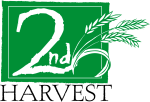
The same laws that protect commercial donors apply to individual donors. The Federal Bill Emerson Good Samaritan Food Donation Act protects all food donors and gleaners from criminal and civil liability.
With the liability issue covered, the focus turns to program development and donor recruitment. For this, marketing materials are needed for recruitment and a tracking system to measure the program’s impact. Spreading the word is obviously important, but of equal importance may be tracking donations. These numbers will be useful for reporting or when applying for grant funding to expand or maintain your local or regional program. Examples of marketing and tracking materials may be found in the appendices.
PAR participants will be community members actively gardening or those interested in getting into the hobby. In either case, the most effective way of reaching such individuals is to develop outreach materials, like brochures and posters and strategically place them where you know gardeners will congregate, like nurseries, garden centers and garden clubs. This will be your primary direct recruitment method.
It is important that the message you take to the public be as simple and clear as possible. The idea is simple, “Grow food for your neighbors in need”, but the logistical framework must be communicated to ensure quality donations and continued participation.
-When, where and by whom will donations be received and recorded?
-How much fresh produce can be held and for how long?
The fewer restrictions you place on participation, the more successful your program will be. For those who request further guidance, such as, “What should I plant?” have materials prepared based on the local food bank’s needs.

